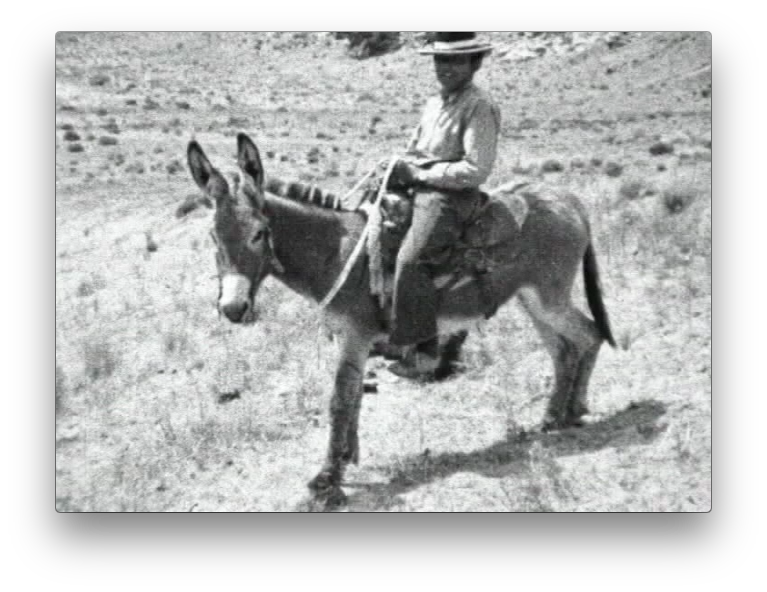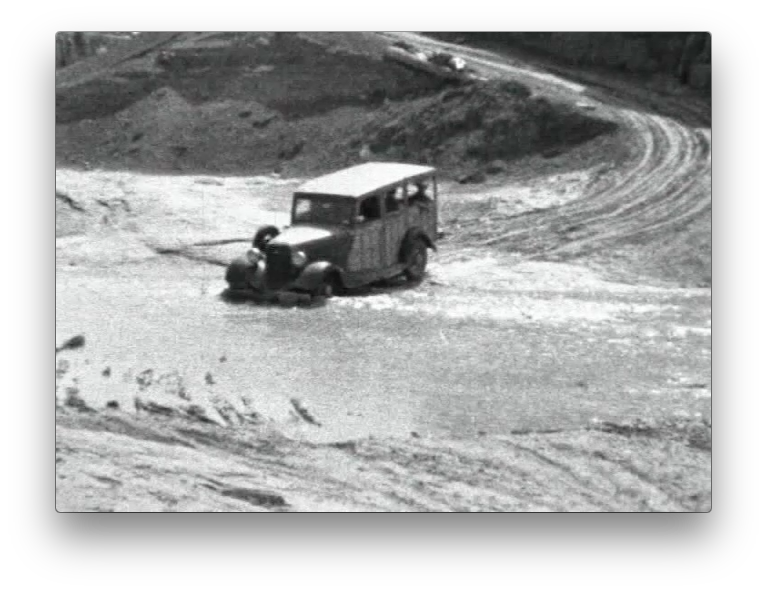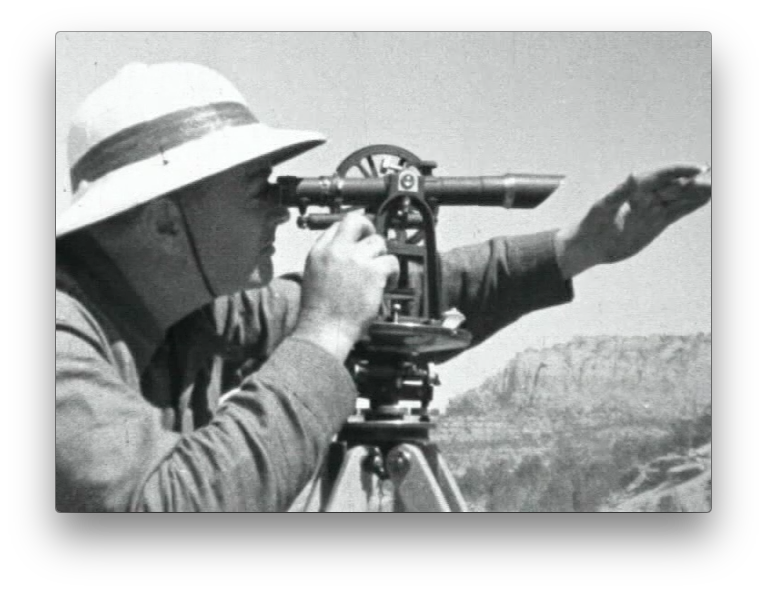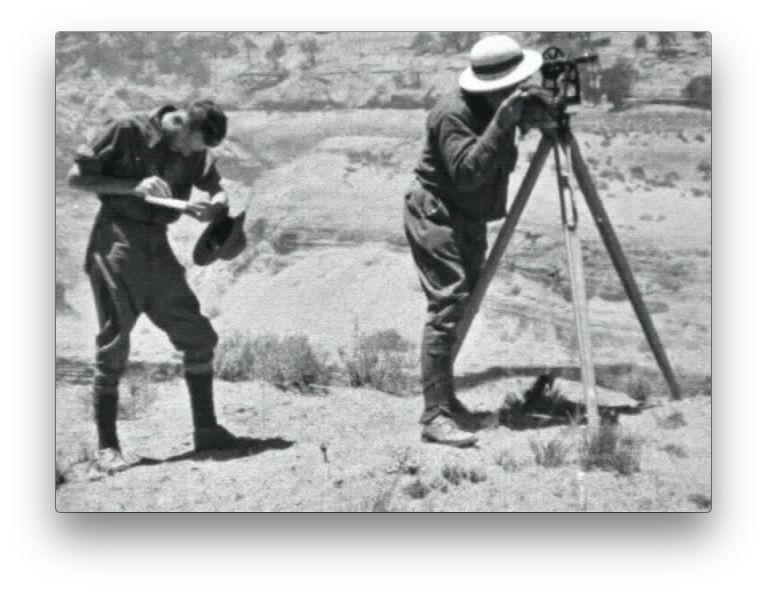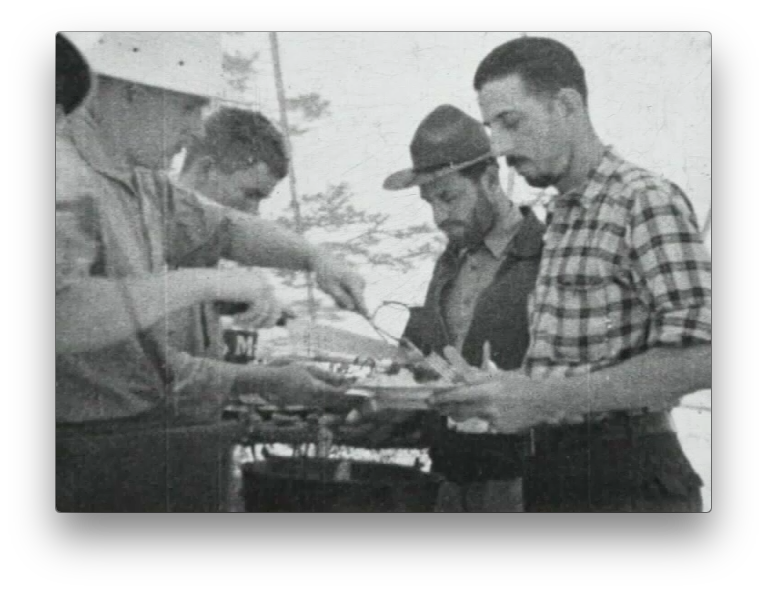Institution: The ONWARD Project
Collection Title: Winkler Family Collection
Date (inclusive): ca. 1933-1938
Collection Identifier: n/a
Repository (location info): n/a
Finding Aid link: n/a
Website link: n/a
RBMVE Biographical Note: Material from descendants of Ansel Hall, Director of RBMVE.
Scope and Content: Three volumes of digitized RBMVE films, originally on three reels. Volumes II and III contains culturally sensitive material (human remains; burials), and access is restricted. Digitized and donated to The ONWARD Project by the Winklers.
Container List or Summary of RBMVE-related Material: Three volumes of RBMVE footage.
Volume I:
(Section captions)
“North of the Navajo County”
“Penetrating the desert plateau, the motor caravan nears its base.”
“Constructing the expedition’s Field Laboratory and Supply Base at Marsh Pass.”
“East Meets West: The Expedition’s eastern caravan started from the Explorer’s Club in New York City, and twelve days later, after a trek of 2500 miles, meets the westerners at the rendezvous in the Arizona ‘back country’.”
“’Chief’ and ‘Prof.’ planning the field campaign”
“Engineers and Archaeologists ‘shove off’ to their camp in the canyon country.”
“Supplies and equipment must be ‘packed’ into Camp Anasazee”
“Navajo herdsmen are still wondering what it was all about.”
“At Camp Anasazee no time is lost in starting field work. The engineers are first on the job”
“Navajos were frequent camp visitors—especially at meal time!” Uncaptioned river boating footage
“Navajos at home”
Volume II:
(Topics; Captions start about 18 minutes in)
Vehicles traveling
Vehicles getting stuck and pushed/dug out of sand
Loading and moving pack animals
Landscape shots
Engineers at work
Babington, Winning and other talking to Navajo man
Cooks at work
Men hiking
Shots of sites, ruins, pictographs
Sorting sherds
Labeling site with paint on the wall
Roping steer
Navajo woman close up
Biologists working on specimens
Shots of various sites
Excavations (RESTRICTED: Culturally Sensitive Material including Human Remains and Burials begins around 17:10)
“North of the Navajo Country”
“From Marsh Pass Base Camp Biologists truck to Navajo Mountain, 84 miles distant.”
“Pack animals make poor passengers”
“To biologists, skinning a mouse is as simple as peeling a banana”
“Reptile specimens are injected with formalin preservative”
“Biological work was fruitful”
Volume III
(Section captions)
“Archaeology: Reveals the story of ancient civilizations in the Southwest”
“The Archaeologists are the ‘treasure hunters’ of the RBMVE which is exploring and mapping some 3000 square miles in the little known northern Navajo country.”
“A ‘scouting party’ on reconnaissance spots a likely looking cave”
“Disappointment!: We are 10 years too late”
“The Basketmakers who lived in this country long before the cliff dwellers stored their corn in subterranean cists.”
“The reconnaissance party explores Black Mesa for the “Big House” of ancient legends.”
“Fragments of pottery give evidence of early occupation. Carefully collected, these ‘potsherds’ fix the relative date of each site discovered”
“Engineers map the site, but future intensive archaeological work is necessary to disclose the history of the old fortress.”
“Potsherds are brought to the field laboratory where they are carefully washed and catalogued.”
“Archaeologists sometimes solve fascinating puzzles”
“This jar was made during the ‘Golden Age’ of the Pueblo people when enormous cliff dwellings like Kiet Siel were occupied”
“Stratigraphy: On remote Black Mesa a test trench discloses evidences of successive cultures.”
[RESTRICTED: Culturally sensitive material including human remains and burials begins around 13 minutes and is interwoven through the end.]
“Thus Archaeology pieces together the fragmentary keys to the romance of vanished peoples.”
“Specimens are shipped to the field laboratory where they are intensively studied, measured, drawn, and photographed.”
“Engineers map the area and accurately locate each burial”
“Buried Treasure: The Expedition is uncovering the site of a Pueblo II village, probably occupied about 950 A.D.”
“Even the dust is sifted for small beads and pendants”
“Excavating a basketmaker burial in Monument Valley”
“Burials provide clues to life, religion, and customs. Those in open sites are often badly weathered.”
“But indispensable are the trowel and brush and other tools that permit meticulous work”
“Pick and shovel for heavy digging”
Click and scroll through selected still images below from Volume II:
